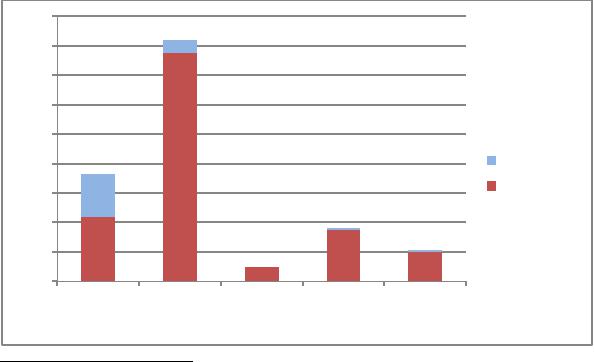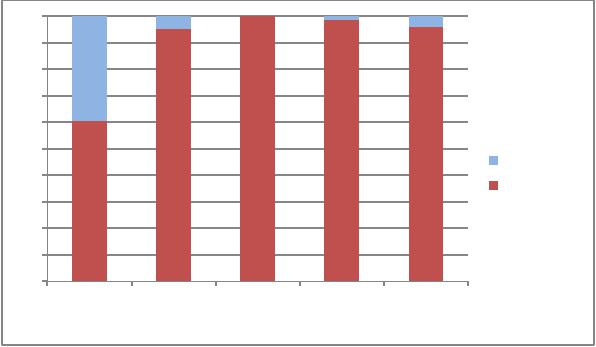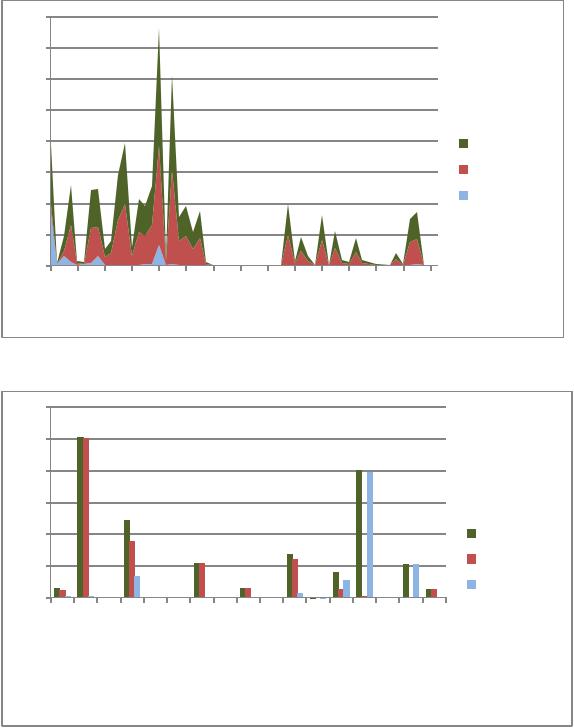
deadly-vanguards_complete_l
.pdf
Combating Terrorism Center
at West Point
Occasional Paper Series
Deadly Vanguards:
A Study of al Qa’ida’s Violence Against Muslims
December 2009
Scott Helfstein, Ph.D.
Nassir Abdullah
Muhammad al Obaidi
The views expressed in this report are the authors’ and do not reflect those of the U.S.
Military Academy, the Department of Defense, or the U.S. Government.
1

“We haven’t killed the innocents; not in Baghdad, nor in Morocco, nor in Algeria, nor anywhere else. And if there is any innocent who was killed in the Mujahideen’s operations, then it was either an unintentional error, or out of necessity as in cases of al Tatarrus.”
Ayman al Zawahiri
The Power of Truth, 2007
In a 2007 online forum, al Qa’ida’s second in command Ayman al Zawahiri, confronted questions about the organization’s use of violence and especially violence against
Muslims. Zawahiri and other leaders have defended al Qa’ida’s use of violence, arguing that their operations do not kill Muslims, and on the rare occasions they do, such individuals are apostates or martyrs. Since the inception of al Qa’ida, the organization has claimed to represent Muslim interests around the world declaring itself the vanguard of true Islam, and the defender of Muslim people. Unfortunately for al Qa’ida, their actions speak louder than their words. The fact is that the vast majority of al Qa’ida’s victims are Muslims: the analysis here shows that only 15% of the fatalities resulting from al Qa’ida attacks between 2004 and 2008 were Westerners.1
This report used Arabic media sources to study the victim’s of al Qa’ida’s violence through a non Western prism. This allows researchers to avoid accusations of bias associated with Western news outlets or U.S. based datasets. Almost all of the major terrorism incident databases utilize Western and English language reporting as primary source material. Al Qa’ida and sympathizers consistently argue that Western media outlets are no more than propaganda machines, and therefore, any reports or data they release distort facts or lack accuracy. English language sources lack credibility in certain parts of the world. In order to ensure both the accuracy and credibility of the analysis and conclusions, the report relied exclusively on Arabic language media sources when coding fatalities. All of the sources used in this exercise are available as an appendix to this report to ensure that other researchers can reproduce these results.
The results show that non Westerners are much more likely to be killed in an al Qa’ida attack. From 2004 to 2008, only 15% percent of the 3,010 victims were Western. During the most recent period studied the numbers skew even further. From 2006 to 2008, only 2% (12 of 661 victims) are from the West, and the remaining 98% are inhabitants of countries with Muslim majorities. During this period, a person of non Western origin was 54 times more likely to die in an al Qa’ida attack than an individual from the West. The overwhelming majority of al Qa’ida victims are Muslims living in Muslim
1 This time period is a product of the open source database on terrorist incidents, running from 2004 to the current, and is discussed in the section below. The report also examines some additional major al Qa’ida attacks in prior periods.
2

countries, and many are citizens of Iraq, which suffered more al Qa’ida attacks than any other country courtesy of the al Qa’ida in Iraq (AQI) affiliate.
It is interesting to note that the percentage of non Western victims increased in the more recent period at the same time that extremist scholars, pundits, and supporters are questioning the indiscriminate use of violence and the targeting of Muslims. Al Qa’ida leaders stress that these individuals are not formal members of the organization, but recognizes their legitimacy as scholars and intellectual contributions to the movement nonetheless.2 One of the most referenced actors in the movement, Abu Muhammad al
Maqdisi, abandoned his support of takfir (the practice of excommunication that is often used to justify murder), and condemned al Qa’ida for indiscriminate killing.3 Even pundits that continue to support al Qa’ida’s vision of jihad and the use of takfir still warn against the adverse effects of targeting Muslims. For example, Nadj al Rawi, a well regarded jihadist pundit, warns that excessive declaration of takfir may generate
“antagonism of a Muslim toward his religion.”4 Sheikh Hamed bin Abdullah al Ali, former Secretary General of the Salafi Movement of Kuwait, counseled jihadis to recognize the sanctity of Muslim blood.5 Even one of al Qa’ida’s important senior leaders, Abu Yahya al Libi, alluded to operational mistakes that might alienate the broader population, and blamed the Ullema (Muslim clerics) for poor guidance and support.6
Despite numerous warnings and ongoing public debates about the indiscriminate use of violence, al Qa’ida remains committed to its current tactics as displayed by the steady stream of Muslim fatalities from 2006 to 2008. Al Qa’ida was marginally successful at attacking Westerners in 2004 and 2005, largely resulting from the attacks in Madrid and
London. However, attacks dropped off considerably in 2006, and there were no Western fatalities recorded from al Qa’ida attacks in that year. In 2007 and 2008 attacks leveled off to 30 and 29, respectively, but there are almost no Western fatalities (12 of 571 victims). Irrespective of statements made by Zawahiri and others, the figures, drawn from exclusively Arabic news sources, show that the Muslims they claim to protect are much more likely to be the targets of al Qa’ida violence than the Western powers they claim to fight.
2Ayman al Zawahiri, “The Facts of Jihad and the Lies of Hypocrisy,” interview, 3 August 2009.
3Abu Muhammad al Maqdisi’s, “Support and Advice, Pains and Hopes,” July 2004, a message to Abu Musab al Zarqawi.
4Atta Najd al Rawi, “An Answer to a Question From the Holy Land,” 1 March 2008. Translation from the SITE Institute.
5Hamed al Ali, “The Covenant of the Supreme Council of Jihad Groups (Mithaq al Majles al A`la li Fasael al Jihad),” January 2007.
6Abu Yahya al Libi, “Jihadist Forum Member Posts Al Libi Interview with Al Sahab, 2002” 28 July 2009.
3

Methodology: Arabic Primary Source Material
One of the most important aspects of this work is the research method employed to generate the data tables used in the analysis and found in the appendix. As noted above, many analytical pieces on terrorist incidents, from both academia and government, rely exclusively on open source English language material. This project differs by drawing on Arabic language primary source material. The use of such source material will hopefully add fidelity to analytical conclusions about al Qa’ida’s targeting and victims.
Since the 11 September attacks, various government and academic institutions have invested in the development of comprehensive data sources on terrorist incidents worldwide.7 A comprehensive study or review of the different data sources is beyond the scope of this paper, but it is important to understand some of the difficulties that arise in such an endeavor.8 First, there is debate about what exactly constitutes a terrorist incident, and different data sources have different rules for inclusion. Some datasets rely on real time event coding, and others incorporate data in a historical or retrospective process.9 Second, different primary source material often has different accounts of the same event. Fatalities, locations, or perpetrators may vary among sources, though that variance is usually small amongst credible sources. Nevertheless, even slight variance complicates coding since researchers have to acquire a number of sources to gain confidence in their records. Third, attack attribution remains difficult. Attribution is easiest when perpetrators claim responsibility (though in some cases multiple groups may lay claim to a successful attack), but information is often sparse and contradictory on attacks conducted anonymously. Finally, the different coding rules employed by different institutions make it difficult to merge the different data sources. One group might consider an incident a terrorist attack, where another might exclude the attack because of different coding rules or heuristics. This complicates analysis across datasets, and helps justify the use of such sources as standalone resources rather than trying to integrate between them.
The data in the tables attached to this report is from Arabic primary source news material, but the research team generated the initial list of attacks using the Worldwide
7This work built upon already existent datasets such as ITERATE, which tracks transnational attacks, and the RAND incident set which was not publicly available.
8Note that this is not an exhaustive list of issues or difficulties. Those interested should examine the coding methodologies associated with the existing datasets.
9Note two representative datasets: the Worldwide Incident Tracking System uses real time event coding (every month additional events are added and incidents are updated as new information comes available), and the Global Terrorism Database uses a retrospective process (acquiring historical information in larger increments and scrutinizing its accuracy).
4

Incident Tracking System (WITS).10 The WITS database is an open source dataset of terrorism incidents maintained by the National Counterterrorism Center. The team in charge of maintaining WITS details the methodology it uses to generate the dataset, attempting to ensure transparency in its coding process. The WITS dataset was only used to generate the initial list of al Qa’ida attacks (date and place), and was not used to generate the fatality data discussed below. The WITS dataset went online in 2004 and covers the period from 2004 to 2009 (updates are posted quarterly). To ensure that al Qa’ida’s targeting from 2004 to 2008 remained reasonably consistent over the operational life of the group, the analysis also examines a small set of high profile attacks from the late 1990s and early 2000s. This additional data is discussed in greater detail below.
There were two criteria used to generate the list of attacks: 1) the attack had to be carried out by al Qa’ida or a group publicly associated with al Qa’ida, and 2) the perpetrators needed to claim responsibility for the attack.11 The rationale for this approach is reasonably straightforward. First, the report details the activity of al Qa’ida and its associates rather than all terrorist and insurgent groups more broadly. Second, attribution is difficult, making it important to minimize the number of attacks included where the perpetrators are not self identifying.12 Self identification is an important element in this report. In many instances, one might imagine that perpetrators were most likely to claim responsibility for attacks they are proud of and avoid such claims when they are displeased by the outcome. Al Qa’ida’s ability to exploit other actors or manipulate situations behind the scenes, as the group has done in Afghanistan and Pakistan, make it more difficult to identify all of the attacks that tie back to that organization, but al Qa’ida should still be incentivized to avoid claiming responsibility when outcomes are poor. By limiting this dataset to attacks with claims of responsibility, the report should capture the attacks that al Qa’ida and its associates are most proud of, presumably meaning attacks against Western targets, and under report the total number of attacks in places such as Pakistan. This data inclusion and search rule helps to ensure that violence against non Westerners is most likely underreported in the data and resulting analytics.
After generating the list of attack dates, the research team exploited the large cache of
Arabic news sources available online. Rather than use casualty data from the WITS (or any other) system, this study wanted to differentiate itself from many of the other
10The WITS dataset can be accessed at http://wits.nctc.gov/.
11The search excluded all attacks where no one claimed responsibility then filtered for al Qa’ida participation.
12The WITS system does not directly code the perpetrator as a data field, but it is included in the event description. Coding a single perpetrator is difficult since groups may collaborate.
5

databases by using Arabic news sources that are widely available. Each attack observation was used to search for articles or incident records from the Arabic news sources, with hope of culling information about the attack victims. Each time the Arabic press reported an event the researcher coded the number of fatalities, the number of Western versus non Western fatalities, and the news source used in the study.13 In many instances, multiple news sources were used to ensure accuracy.
The initial list of al Qa’ida attacks included 329 incidents. Within this list, researchers were unable to find Arabic news citations for 16 (4.8%) of the incidents. Of these unsubstantiated records, other datasets reported that there were no fatalities in ten of the incidents, and one fatality in each of three incidents. This suggests that the difficulty associated with finding Arabic news sources may lend more to the small scale of these attacks relative to the vast numbers of attacks that occur. The most deadly attack among those apparently not reported by the Arabic media resulted in 15 fatalities. All of these attacks are still listed in the data table found in the appendix, but they are not included in the analytics below. The low number of casualties in the set of unreported incidents means that inclusion would not impact the analytic results in any meaningful way. The research team could have relied on other existing data sources to incorporate these attacks, but it was important that the team be able to generate the data off the primary
Arabic source material. If Arabic open source reporting did not capture the event, it is treated as though it did not happen for the analytics below.
After using this process for the incidents from 2004 to 2008, researchers examined an additional set of al Qa’ida attacks to ensure that the results from this more recent period (2004 2008) were consistent with prior behavior (1995 2003). There were 23 attacks, some high profile, perpetrated from 1995 to 2003. The outcome of these attacks was then coded using the same methodology described above. This list of attacks, fatalities, and the open source Arabic media sources used to code fatalities is included in the appendix.
Analytics: The Real Victims
From 2004 to 2008, there were 3,010 fatalities in 313 attacks. On average, there were 9.6 people killed per attack during this period, and this remains reasonably consistent from 2004 to 2007. The fatalities per attack decline in 2008, averaging 7.2 people killed per
13 The coding scheme used for this project focused on nationality, relying on designation of victims as “Western” and “non Western.” This scheme was used because media sources (irrespective of language) usually include victims’ nationalities as identifying religious affiliation is difficult. It is interesting to note that if major media outlets cannot distinguish victims’ religions, it is difficult to believe that others (such published jihadi materials) could obtain an accurate assessment.
6

incident. Over the entire five year period, Arabic news sources revealed that only 12% (371) of al Qa’ida’s victims were Westerners. Excluding the Madrid bombings on 11
March 2004 and the London bombings on 7 July 2005, the Arabic media sources used here show that only 4.4% of al Qa’ida’s victims were Western.14 Including or excluding these two attacks, it is clear that al Qa’ida’s violence disproportionately harms the
Muslim community. This section takes a closer look at the data and identifies some trends.
Total casualties from al Qa’ida attacks have fluctuated in the period under study. One reason for the observed fluctuation in fatalities is the high levels of violence in Iraq around 2005. Figure 1 shows the total casualties annually from 2004 to 2008 characterized as Western and non Western, with the total number of incidents for each year listed along the bottom axis in the parentheses. The analysis shows that the variation in casualties fluctuated with the variation in incidents, which is not surprising.
The number of attacks leveled off in 2007 and 2008, with 30 and 29 attacks, respectively. The chart also shows that the number of Western victims is disproportionately low relative to the total fatalities over the entire period. Figure 2 shows the annual casualties by percentage, and supports the notion that Westerners are unlikely to fall victim to al Qa’ida attacks.
Figure 1: Casualties, Annual
14 The sources used reflected 197 Westerners killed in the Madrid attack and 52 killed in the London attack.
7

Figure 2: Casualty Percentage, Annual
Monthly causalities for the period 2004 to 2008 are found in Figure 3. They show two clear trends: 1) there is high variance in the number of people killed each month, and 2) the number of Western casualties is far below the non Western casualties in every month except March 2004 (the first month recorded in the study). The variation in casualties from month to month reflects the opportunistic nature of al Qa’ida and terrorism. Terror groups attack when they have the will and capability, and the variation suggests that their capability to attack waxes and wanes with time. Given al Qa’ida’s need to strike in order to maintain relevance, it is not surprising that it is not discerning in its targeting. This argument gains further support when one looks at the distribution of casualties by country, shown in Figure 4. Since al Qa’ida has limited capability to strike against its Western enemies, the group maintains its relevance by attacking countries with Muslim majorities.
8

Figure 3: Casualties, Monthly
Figure 4: Casualties, By Country (Excluding Iraq)
Note: Iraq is excluded from this figure because the number of casualties is disproportionately high when compared to the other countries targeted in al Qa’ida attacks.
9
